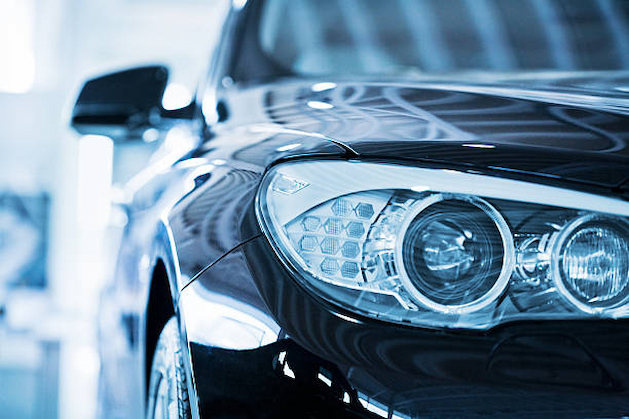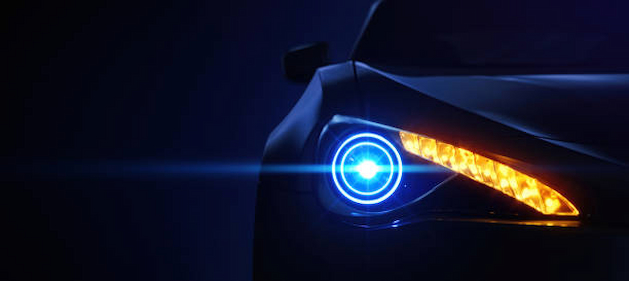Cars have evolved to become safer, faster and more comfortable. While the IC engine has remained relatively the same for decades, basic safety systems and parts like the brakes and lights have taken leaps and bounds from their rudimentary beginnings. An essential component in this network are car headlights. Their main role is to light up the road up, and warn others of your presence. Used in low visibility settings and inclement weather, the parts are mandatory on any car. Should they fail, drivers not only risk fines, but also compromising their safety and that of others.
Headlight Basics
Located at the front, just above the bumpers, headlights fulfil two main roles. They illuminate roads at night and in poor weather, helping drivers spot road obstacles, changes in direction, possible hazards, and other traffic. They also allow driver to make any changes in speed or direction to ensure safety. At the same time, the bright light warns other traffic participants of your presence, with same aim of preventing possible accidents and raising awareness.
New car headlight technologies have also given car makers a white canvas to integrate headlights into the whole brand aesthetic working together with grilles, bumpers, and other design elements. Observant drivers and car enthusiasts can make most vehicles out in piercing darkness by the headlight shape. And with LEDs and lasers, lights have moved from the bulky and boxy shapes to parts that seamlessly fit the car aesthetic without foregoing their main purpose.
Common Car Headlight Types

From simple carbide lamps to the newest lighting tech, car head light designs have seen quite a fewer iterations throughout the years:
- Halogens – introduced in the 1950s, halogen bulbs have remained till this day as an effective and bright light source. They’re recognizable by the yellow/orange color. Light is produced when an electric current heats a tungsten filament set inside a vacuum, surrounded by a heat-resistant halogen gas. While outclassed for overall brightness by newer bulbs, halogens are cheap, easy to replace and widely available.
- High-Intensity Discharge (HID)/ Xenon – to address the shortcomings of halogens (high power draw, short lifespans), HID or Xenon lights were introduced in passenger car around the 2000s. Recognizable by their bright bluish tint, they produce light when current passes between to electrodes, with remnant space filled by Xenon gas to amplify brightness. They use much less power, are some of the brightest options, disperse light wider and further out for improved visibility, but the high cost and increased instances of glare for oncoming traffic meant they soon lost favor with many drivers.
- LEDs – the industry standard today. Not bulbs in the traditional sense, but light emitting diodes that produce a natural, white light when current passes through the diode assembly. They have some of the fastest start-up times (good for safety), very low power draw, can be calibrated for varying brightness levels and color temperatures, and their compact footprint means they can take on different shapes, or placed in different vehicle areas. A major drawcard is that also outlast all other lighting tech, with averages of around 50,000 working hours. While relatively expensive when they first came out, LEDs are now more affordable and even more efficient, and there are LED conversion kits for cars and drivers that want to move on from older halogen bulbs. A newer take are Matrix LEDs, allowing individual diodes to be turned off or on depending on road and traffic conditions.
- Laser lights – the newest lighting technology, reserved for high-end and premium cars. They produce an intense and bright light when gas is energized by a focused laser beam. As such, they get very bright, can project light much further, and are even smaller and more efficient than high-performance LEDs. The complex design (they need separate cooling due to high heat), high production cost and the fact they’re used only for high beams means limits their use.
When to Change Your Headlights
Halogen bulbs have the shortest lifespans, but even they can comfortably shine for 3000 work hours, before any signs of wear. Heat in traditional bulb designs is the main reason for wear, followed by moisture and wiring issues. Common signs to look for are:
- Dimming or flickering – as parts such as filaments start to wear, you’ll notice a drop in brightness. Issues with bulbs, the lenses, fuses or connections can also lead to flickering. Both problems require prompt headlight replacements.
- Foggy or yellowed lens covers – prolonged exposure to UV rays, moisture, and road debris is the main reason for discoloration in lens covers. This affects brightness and dispersion.
- Misalignment – misaligned lights cause glare and distorted light patterns.
- Damaged housing or wiring – housings enclosing bulbs and diodes are made of impact resistant materials (usually engineered plastics or metal) and prevent water and dust ingress. Check these for dents or cracks. Also, inspect the wiring for fraying or deteriorating insulation sheaths.
What to Look for in Replacements
When setting out to buy car headlights, bear in mind key performance and build factors. Ensure lights are compatible for your make, model and trim, ensuring that they fit and there are no electrical or wiring issues. Custom-made headlights prevent common shorting issues or instrument cluster warnings. Also look into build quality, housing and lens materials, how headlight assemblies are put together, and the quality of bulbs, diodes and LED chips.
While all lights provide enough brightness across multiple driving scenarios, there are key differences in brightness levels and color temperatures in different types. If you find halogens struggling in pitch darkness, opt for compatible HID or LED conversion kits. These are not only brighter, but also illuminate more of the road ahead. LEDs can also be chosen to shine a more natural light, or in warmer or cooler temperatures. This is important as it reduces fatigue and glare. They’re also more efficient, so put less stress on the battery.


